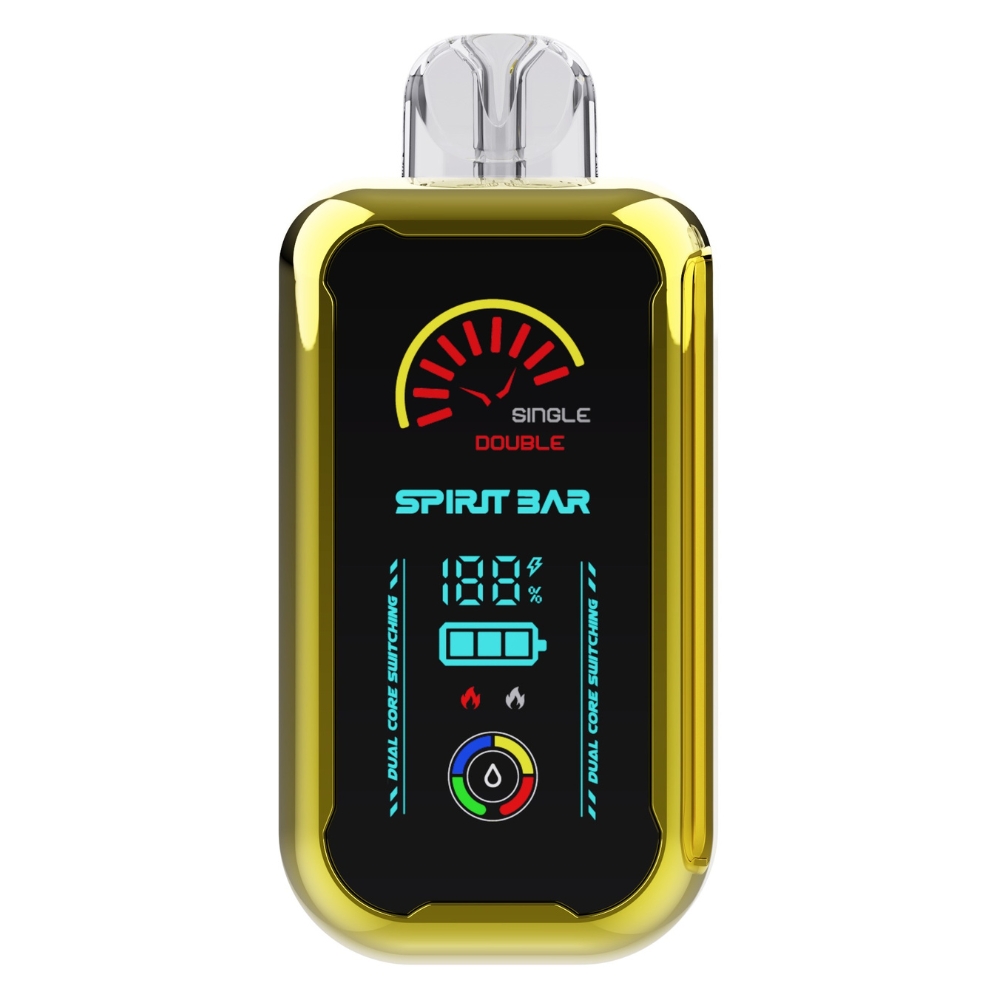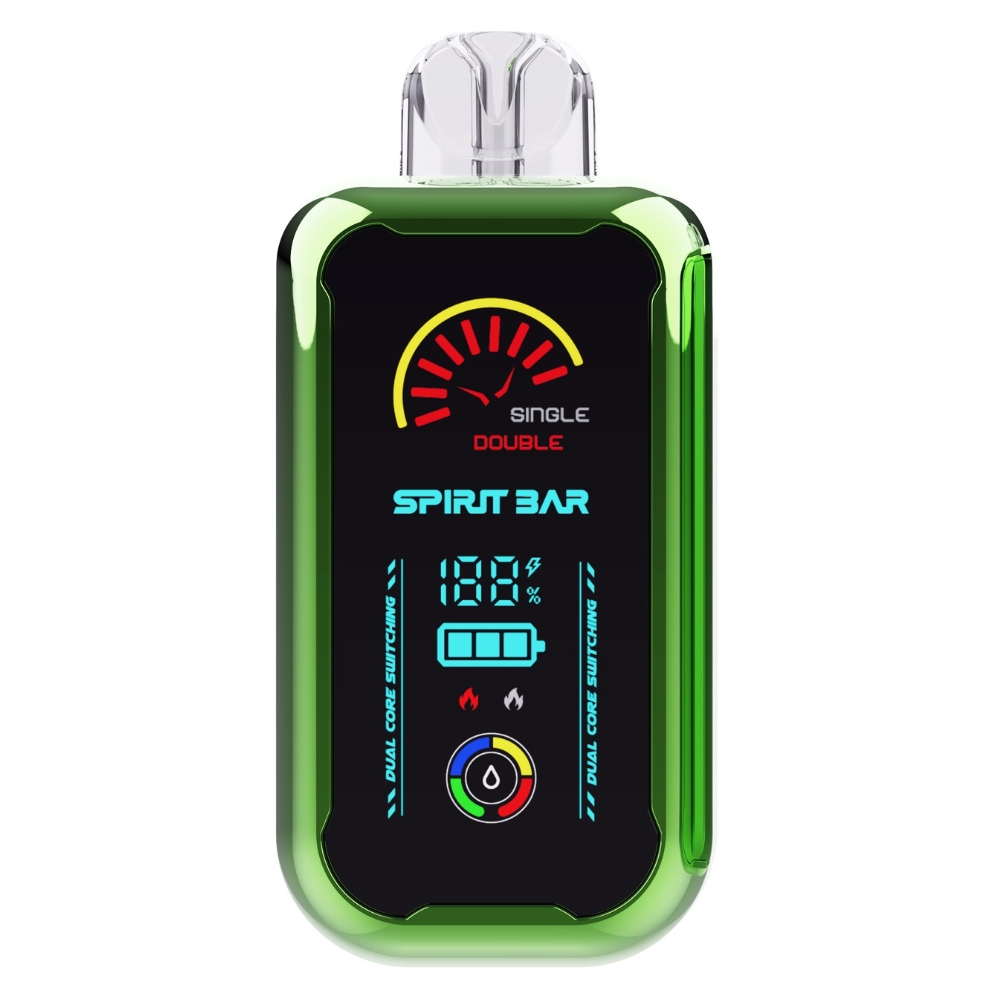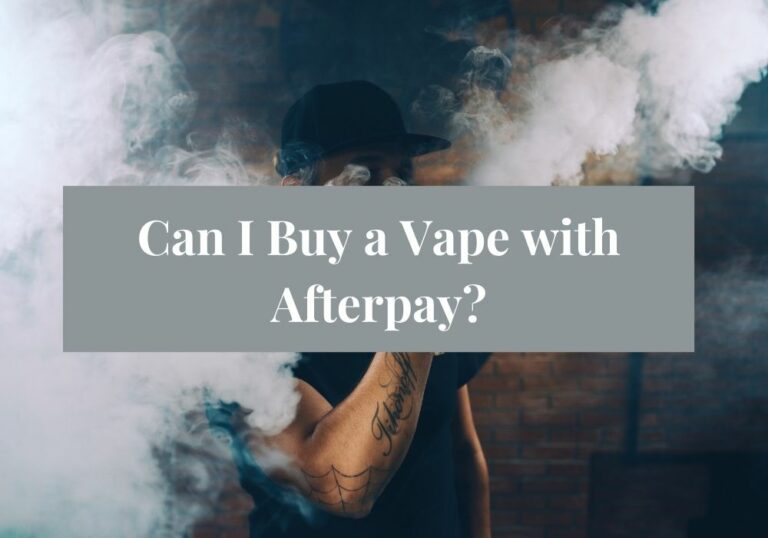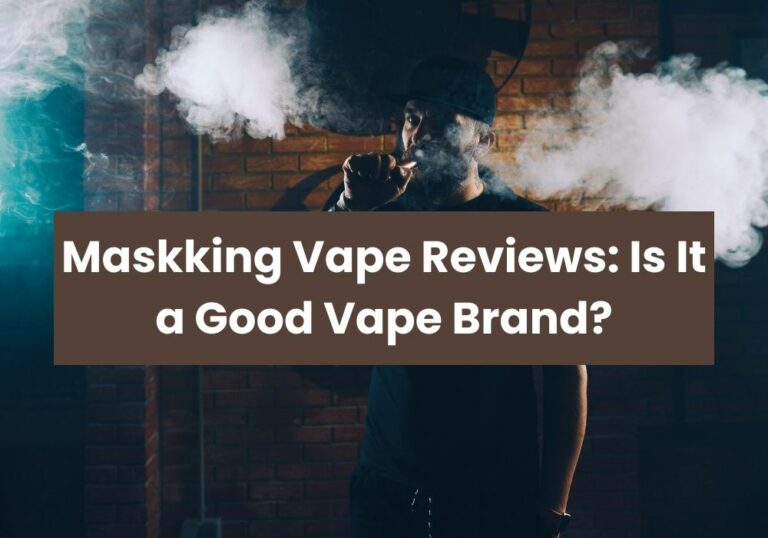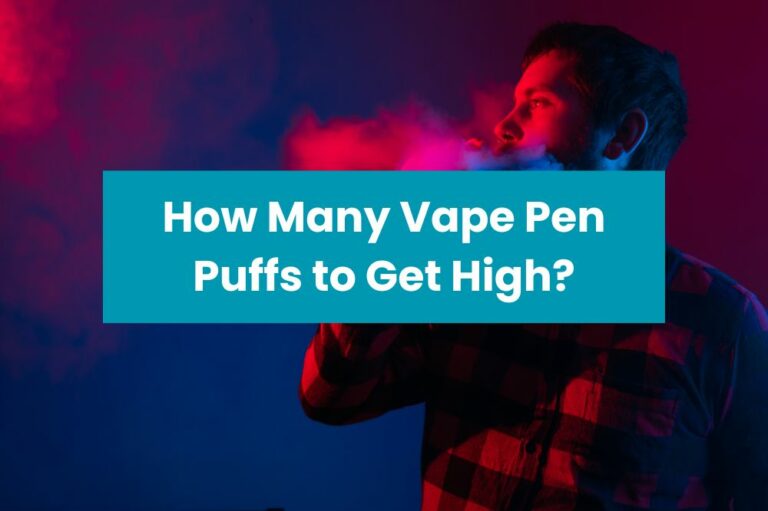How Harmful Are Nicotine Vapes?
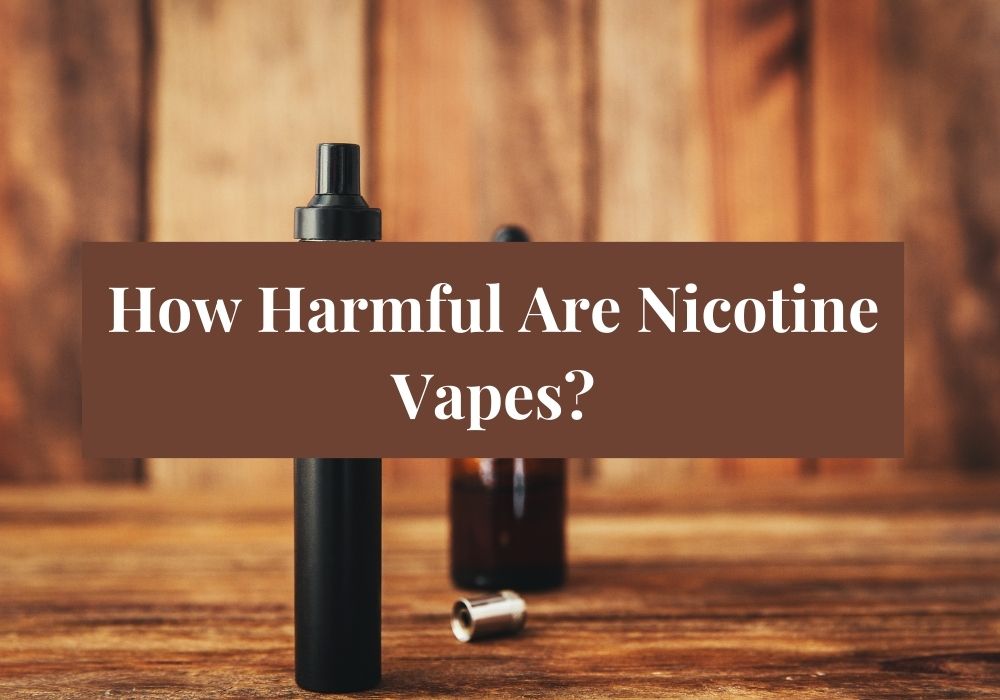
If you’re a smoker or have been around smokers, you’re probably aware of the risks associated with smoking. Smoking can cause lung cancer, heart disease, and other health problems. However, in recent years, there has been a rise in popularity of nicotine vapes, which are marketed as a safer alternative to smoking. But just how harmful are nicotine vapes?
According to Johns Hopkins Medicine, while vaping is less harmful than smoking, it’s still not safe. E-cigarettes heat nicotine, flavorings, and other chemicals to create an aerosol that you inhale. Regular tobacco cigarettes contain 7,000 chemicals, many of which are toxic. While we don’t know exactly what chemicals are in e-cigarettes, they still contain harmful substances that can cause health problems.
Mayo Clinic Health System warns that vaping can cause lung injury, which can be life-threatening. The symptoms of lung injury can include coughing, shortness of breath, chest pain, fever, and fatigue. Additionally, vaping can lead to nicotine addiction, which can cause a range of health problems. While vaping may be less harmful than smoking, it’s still important to be aware of the risks associated with it.
Understanding Nicotine Vapes
Nicotine vapes, also known as e-cigarettes or electronic nicotine delivery systems, are battery-powered devices that heat a liquid containing nicotine, flavorings, and other chemicals to create an aerosol that users inhale. They come in various shapes and sizes and are marketed as a safer alternative to traditional cigarettes.
What Are Nicotine Vapes?
Nicotine vapes are devices that heat a liquid containing nicotine, flavorings, and other chemicals to create an aerosol that users inhale. The liquid, also known as e-juice or vape juice, comes in various flavors and nicotine strengths. Some e-juices contain no nicotine at all.
How Do They Work?
Nicotine vapes work by heating a liquid containing nicotine, flavorings, and other chemicals to create an aerosol that users inhale. The liquid is typically stored in a cartridge or tank, which is attached to a battery-powered heating element called an atomizer. When the user inhales, the atomizer heats the liquid, creating a vapor that is inhaled.
Nicotine vapes are designed to mimic the experience of smoking traditional cigarettes, but without the harmful chemicals found in cigarette smoke. However, while they may be less harmful than traditional cigarettes, nicotine vapes are not without risks. The aerosol produced by nicotine vapes contains a variety of chemicals, some of which are known to be harmful, including heavy metals, volatile organic compounds, and ultrafine particles.
If you are considering using nicotine vapes, it is important to understand the risks and to use them responsibly. Nicotine vapes are not safe for everyone, particularly young people, pregnant women, and people with certain health conditions. It is also important to use nicotine vapes as directed and to avoid using them excessively or in combination with other nicotine products.
Health Implications of Nicotine Vapes
Nicotine vapes have become increasingly popular in recent years. While they are often marketed as a safer alternative to traditional cigarettes, there are still health implications associated with their use. In this section, we will explore the short-term effects, long-term effects, and mental health concerns associated with nicotine vapes.
Short-Term Effects
Nicotine vapes can have immediate effects on your body. When you inhale the aerosol, it is absorbed into your bloodstream and can cause a range of short-term effects. These can include:
- Increased heart rate
- Elevated blood pressure
- Dizziness
- Nausea
- Headaches
- Coughing
- Irritation of the throat and mouth
While some of these effects may be mild and short-lived, others can be more severe and long-lasting. If you experience any of these symptoms, it is important to stop using nicotine vapes and seek medical attention if necessary.
Long-Term Effects
The long-term effects of nicotine vapes are still being studied, but there are concerns that they may have negative impacts on your health. Some potential long-term effects of nicotine vapes include:
- Increased risk of heart disease
- Damage to lung tissue
- Chronic bronchitis
- Respiratory infections
- Reduced lung function
These effects may be more pronounced in individuals who use nicotine vapes regularly or over an extended period of time. It is important to note that the long-term effects of nicotine vapes are not yet fully understood, and further research is needed to fully understand the potential risks.
Mental Health Concerns
In addition to the physical health implications, there are also concerns about the mental health impacts of nicotine vapes. Nicotine is a highly addictive substance, and regular use of nicotine vapes can lead to dependence and addiction. This can have negative impacts on your mental health, including:
- Increased anxiety
- Depression
- Irritability
- Difficulty concentrating
- Mood swings
If you are experiencing any of these symptoms, it is important to seek help from a medical professional or mental health provider.
Overall, while nicotine vapes may be marketed as a safer alternative to traditional cigarettes, they still carry health implications. It is important to be aware of the potential risks associated with their use and to make informed decisions about your health.
Nicotine Addiction and Vapes
If you vape, you are exposing yourself to nicotine, a highly addictive substance that can lead to dependence and withdrawal symptoms. Here are some things you should know about nicotine addiction and vaping.
Nicotine Dependence
Nicotine is highly addictive, and it can be difficult to quit once you start using it. When you vape, the nicotine in the e-liquid is absorbed into your bloodstream through your lungs. Once it reaches your brain, it triggers the release of dopamine, a neurotransmitter that causes feelings of pleasure and reward. Over time, your brain becomes accustomed to the presence of nicotine, and you may start to feel like you need it in order to feel good.
Withdrawal Symptoms
If you try to quit vaping, you may experience withdrawal symptoms as your body adjusts to the absence of nicotine. Symptoms can include:
- Irritability
- Anxiety
- Depression
- Restlessness
- Insomnia
- Headaches
- Increased appetite
- Cravings for nicotine
Withdrawal symptoms can be uncomfortable, but they are usually temporary and will go away as your body adjusts to the absence of nicotine. If you are having trouble quitting vaping on your own, there are resources available to help you, such as support groups and nicotine replacement therapy.
It’s important to remember that vaping is not a safe alternative to smoking, and it can still be harmful to your health. If you are concerned about your nicotine use, talk to your healthcare provider about ways to quit.
Comparing Nicotine Vapes and Traditional Cigarettes
Harmfulness Comparison
When it comes to harm, vaping and smoking are not equal. Traditional cigarettes contain thousands of harmful chemicals, including tar, carbon monoxide, and benzene, which can cause cancer and other serious health problems. In contrast, vaping devices heat a liquid that usually contains nicotine, flavorings, and other chemicals, producing an aerosol that users inhale. While the aerosol is not harmless, it does not contain tar or carbon monoxide, which are the most harmful components of cigarette smoke.
However, this does not mean that vaping is entirely safe. According to Healthline, some experts still consider vaping less harmful than smoking cigarettes, but that doesn’t mean vaping isn’t harmful. The liquid used in vaping devices can contain harmful chemicals such as formaldehyde, acrolein, and diacetyl, which can cause lung damage and other health problems. Moreover, the long-term effects of vaping are not yet fully understood.
Addiction Potential
Both traditional cigarettes and nicotine vapes contain nicotine, which is highly addictive. Nicotine is a stimulant that can increase heart rate and blood pressure, and it can also affect the brain, leading to addiction and withdrawal symptoms. According to Cleveland Clinic, vaping and smoking both have the potential to cause addiction, and quitting either habit can be difficult.
However, some studies suggest that nicotine vapes may be more addictive than traditional cigarettes. The high levels of nicotine in some vaping liquids can make them more potent and addictive than cigarettes. Moreover, the flavors and ease of use of vaping devices can make them more appealing to young people, who may be more vulnerable to addiction.
Overall, while vaping may be less harmful than smoking cigarettes, it is not entirely safe. Both habits contain nicotine, which is highly addictive, and both can cause serious health problems. If you are trying to quit smoking or vaping, it is important to seek professional help and support to increase your chances of success.
The Role of Nicotine Vapes in Smoking Cessation
If you’re a smoker who wants to quit, you may have heard that nicotine vapes can help you quit smoking. Nicotine vapes are also called e-cigarettes or electronic cigarettes. They work by heating a liquid that contains nicotine, flavorings, and other chemicals. You inhale the vapor that is produced.
Some people use nicotine vapes as a way to quit smoking. They may use them to gradually reduce their nicotine intake, or they may use them as a replacement for cigarettes. Nicotine vapes are often marketed as a smoking cessation aid for adults.
There is some evidence that nicotine-based vaping products are more effective as smoking cessation aids than those without nicotine. However, the U.S. Food and Drug Administration (FDA) has not approved e-cigarettes as a quit smoking aid, and more research is needed on whether e-cigarettes are effective for quitting smoking and to better understand the health effects of e-cigarettes.
If you are considering using nicotine vapes to quit smoking, it’s important to talk to your healthcare provider. They can help you develop a quit plan that is tailored to your needs and provide you with resources and support to help you quit smoking.
Keep in mind that nicotine is highly addictive, and there are potential health risks associated with using nicotine vapes. Nicotine can harm brain development, which continues until about age 25. Nicotine is also dangerous for pregnant women and their developing babies. Many newer types of e-cigarettes use nicotine salts (also called nic salts), which can deliver high concentrations of nicotine.
In conclusion, while some people may find nicotine vapes helpful for quitting smoking, it’s important to talk to your healthcare provider and be aware of the potential risks associated with using nicotine vapes.
Regulations and Public Perception on Nicotine Vapes
If you are a vaper, you may be wondering about the regulations and public perception of nicotine vapes. The popularity of vaping has led to many regulatory changes in recent years. In the United States, the Food and Drug Administration (FDA) has been regulating e-cigarettes since 2016 1. The FDA’s regulations on nicotine vapes are designed to protect public health by ensuring that these products are safe and effective.
One of the main goals of the FDA’s regulations is to prevent minors from using nicotine vapes. In 2019, the FDA announced a ban on the sale of flavored e-cigarettes in convenience stores and gas stations 2. This ban was put in place to reduce the appeal of these products to young people. The FDA has also taken action against companies that market their products to minors 3.
The public perception of nicotine vapes has also changed in recent years. While vaping was once seen as a safer alternative to smoking, many people now view it as a potentially harmful habit. This shift in perception is due in part to the outbreak of lung injuries associated with vaping in 2019 4. These injuries were linked to the use of e-cigarettes containing THC, the psychoactive ingredient in marijuana, but they also raised concerns about the safety of nicotine vapes.
Despite these concerns, many people still view nicotine vapes as a way to quit smoking. The FDA has approved some e-cigarettes as smoking cessation aids, and some studies have found that vaping can be an effective way to quit smoking 5. However, more research is needed to fully understand the long-term health effects of vaping.
Overall, the regulations and public perception of nicotine vapes are constantly evolving. If you are a vaper, it is important to stay informed about the latest developments in this area. By staying up-to-date on the latest regulations and research, you can make informed decisions about your vaping habits.
The Youth and Nicotine Vapes
Nicotine vapes have become increasingly popular among young people in recent years. This trend is concerning, as nicotine is highly addictive and can harm adolescent brain development, which continues into the early to mid-20s.
Youth Usage Statistics
According to the Centers for Disease Control and Prevention (CDC), e-cigarette use among high school students increased from 1.5% in 2011 to 27.5% in 2019. This trend is particularly alarming, as young people who use e-cigarettes may be more likely to smoke cigarettes in the future.
Potential Risks for Young Users
Using nicotine in adolescence can harm the parts of the brain that control attention, learning, mood, and impulse control. In addition to nicotine, e-cigarettes can contain other harmful substances, such as heavy metals, volatile organic compounds, and ultrafine particles that can be inhaled deep into the lungs.
Research has also suggested that e-cigarette use may increase the risk of conventional smoking. A study published in JAMA Pediatrics found that young people who use e-cigarettes are more likely to start smoking cigarettes within the next year.
In summary, the rising popularity of nicotine vapes among young people is a cause for concern. Nicotine is highly addictive and can harm adolescent brain development, and e-cigarettes can contain other harmful substances besides nicotine. It is important to educate young people about the potential risks of using nicotine vapes and to discourage their use.

